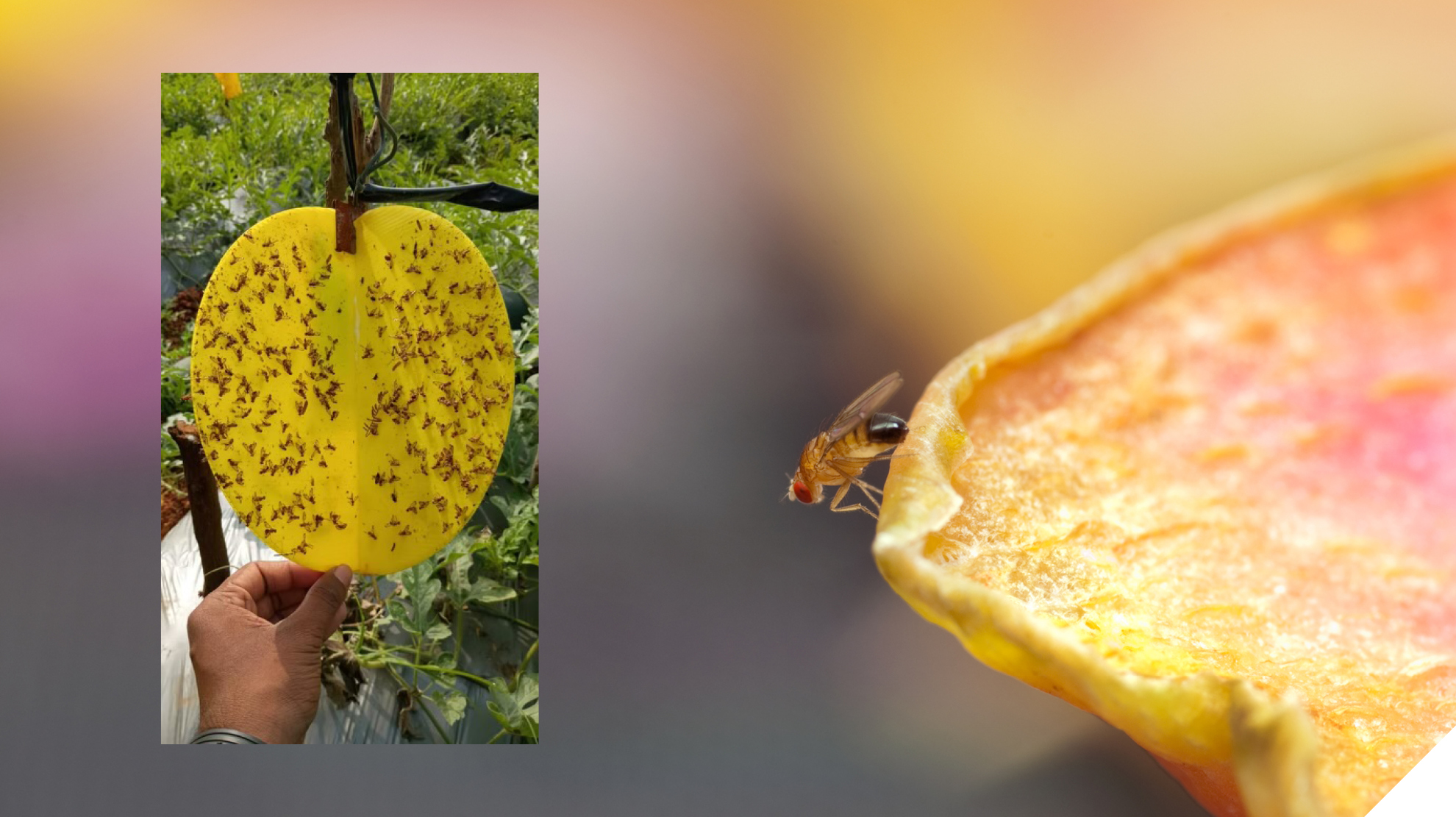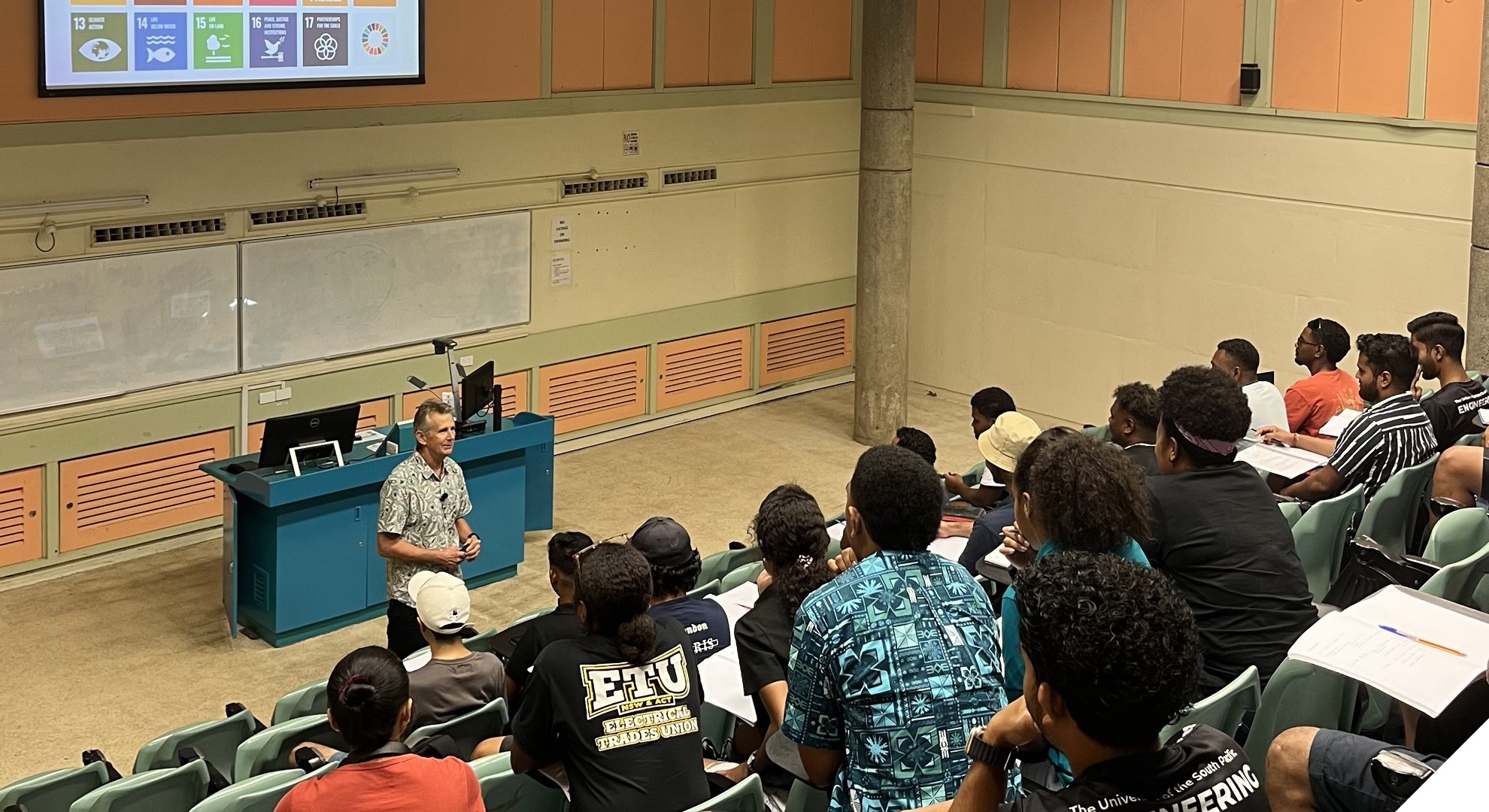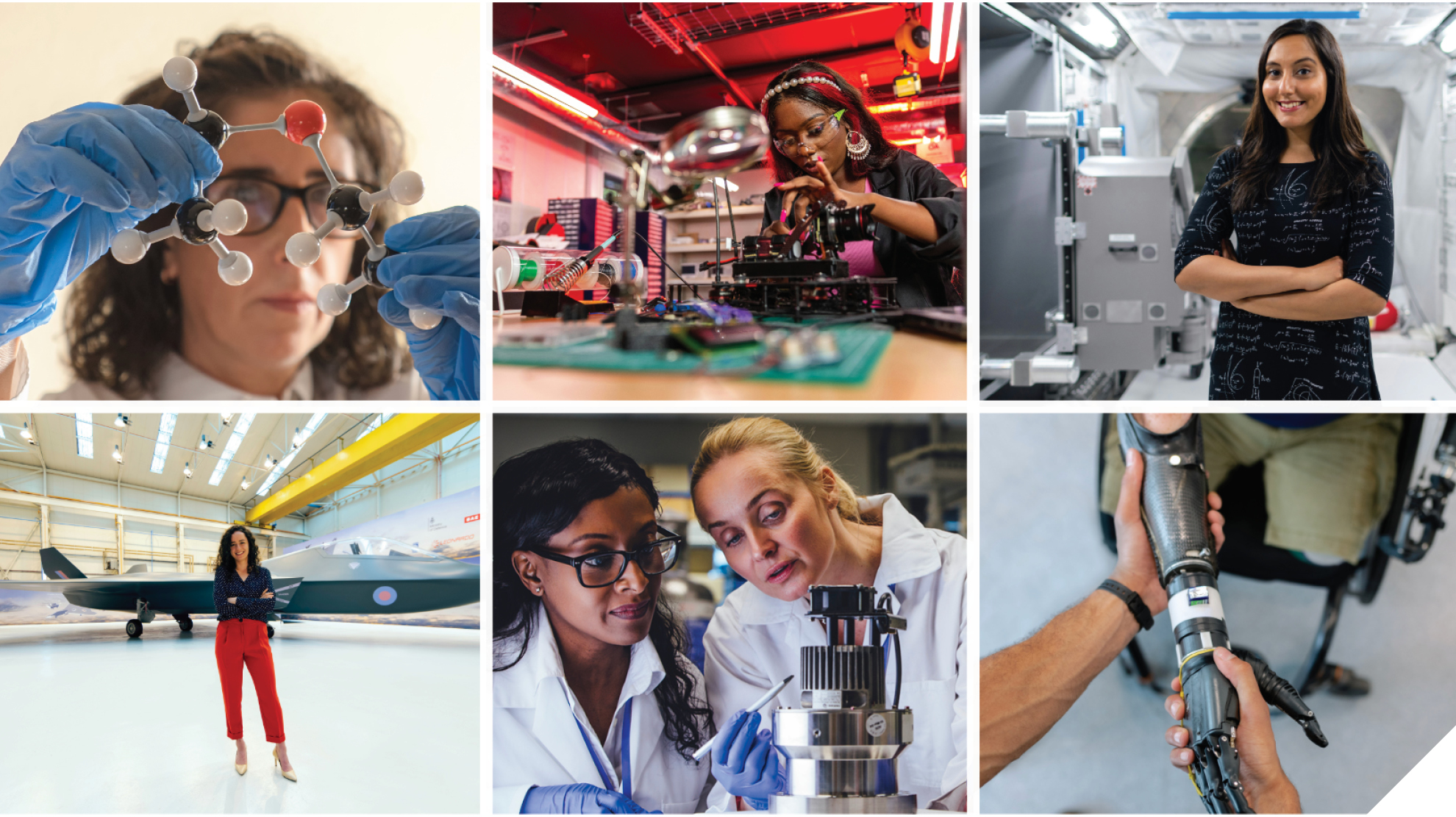Research to discovery
At Griffith University, we identified volatile chemicals – emitted by ripe fruit – that attract mature female fruit flies to lay their eggs. A series of laboratory and field experiments led us to develop a mixture of volatiles that were attractive to Queensland fruit fly, our major pest species. Following the University applying for a Provisional Patent, an industry partner, Ag Nova Technologies, was licensed to develop a commercial product.
The road to commercialisation
The perennial challenge of commercialisation in Australia, the transfer of research to commercial products is fraught. However, our researchers and Ag Nova Technologies Pty Ltd worked tirelessly over some eight years to transfer the initial synthetic lure discovery into a commercially viable product.
This applied research phase included the development of a slow-release gelatinous form of the lure, a trap design including a particular shape and colour shown by our previous research to attract a range of fruit fly pest species, and a sticky surface sufficient to adhere flies but not other beneficial insects. Ag Nova played a major role in supporting and facilitating this applied research and in establishing a full patent in Australia and other countries in our region.
Proof of concept
After developing this technology, it was essential that its efficacy could be proven in commercial plantations. Extensive field trials conducted in Southeast Queensland in a range of fruit crops provided confidence to recommend the use of the trap to all horticultural industries that are subject to fruit fly attack. In one remarkable example, on a 15 hectare persimmon plantation, crop losses were reduced from 50% to less than 2% through use of the Fruition® Nova device. In India, this Fruition technology has proven successful in a range of crops:
• On gherkin plantations, crop losses to fruit flies have been markedly reduced resulting in an increase in production of 1,900kg/ha. This benefit will flow on to 90,000 farmers supplying 51 processing factories.
• Similarly, a 30% increase in mango production and 40% increase in guavas have come about through the use application of Fruition® Nova
We are now conducting field trials in the Pacific nation of Tonga.
To date, some 20 fruit fly species are found to be attracted to this new female fruit fly trapping technology.
Conclusion
Australian-based research is providing solutions to a world-wide problem. As we have demonstrated, pure research twinned with applied research and industry collaboration can provide outstanding advancements in innovative, high-impact outcomes for health, economies, humanity and the environment.
Australian aid programs financed our early fruit fly research in many countries across Southeast Asia and the Pacific. In the early years of this century, we introduced yeast protein baits which yielded significant benefit. Among the many success stories, one that stands out is in northern Vietnam where hill tribe children were able to eat fresh fruit for the first time in generations.












